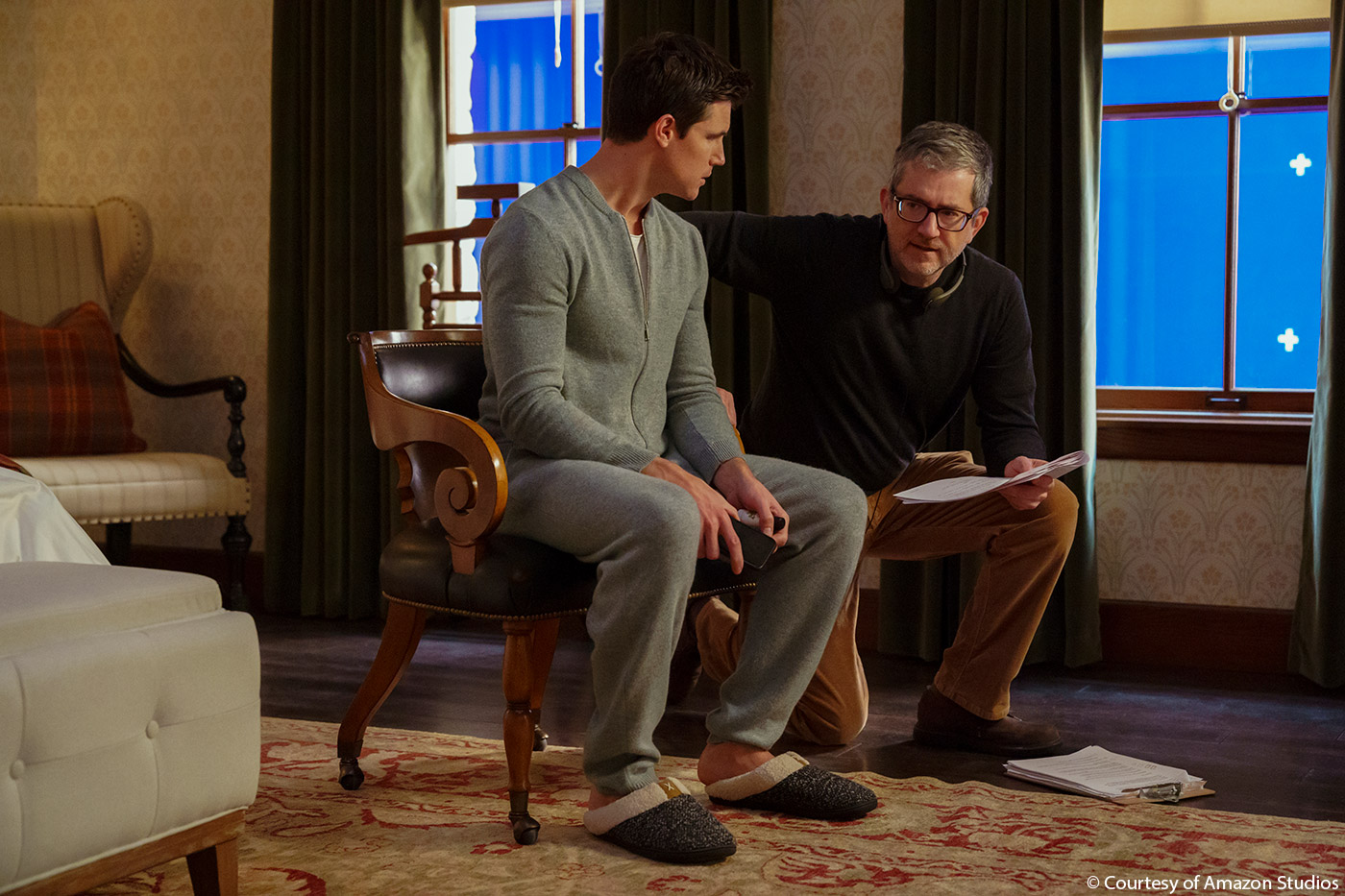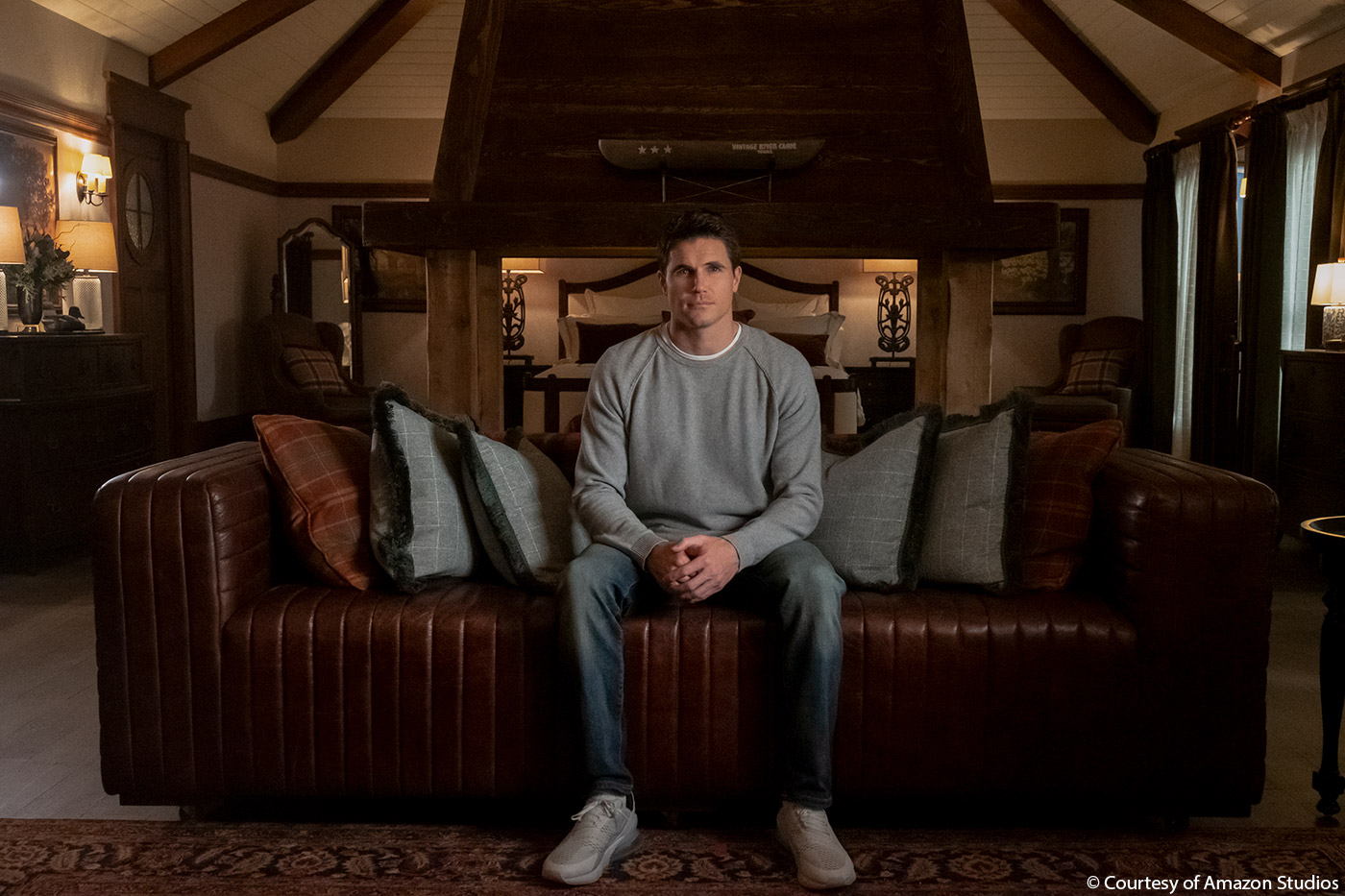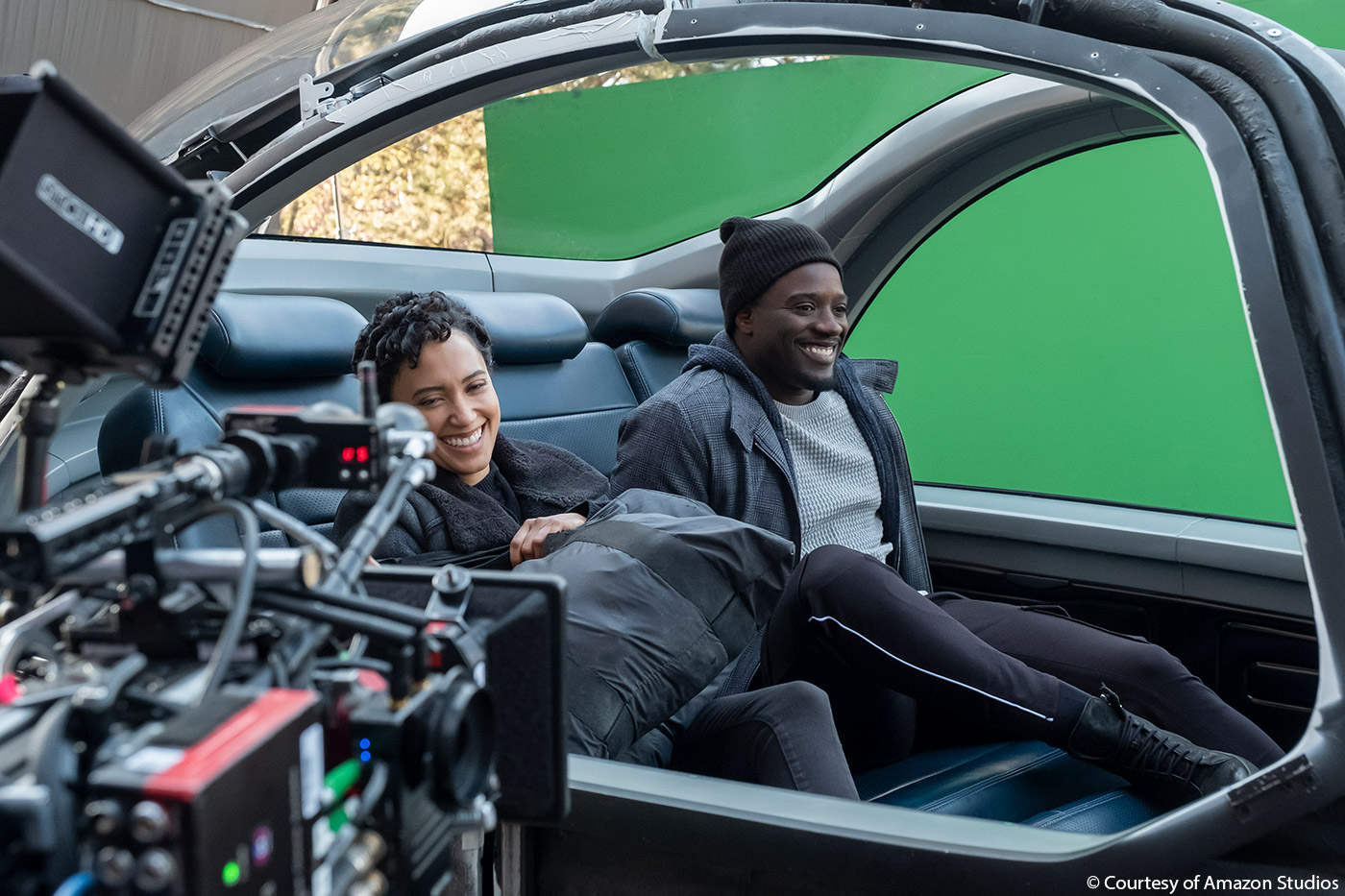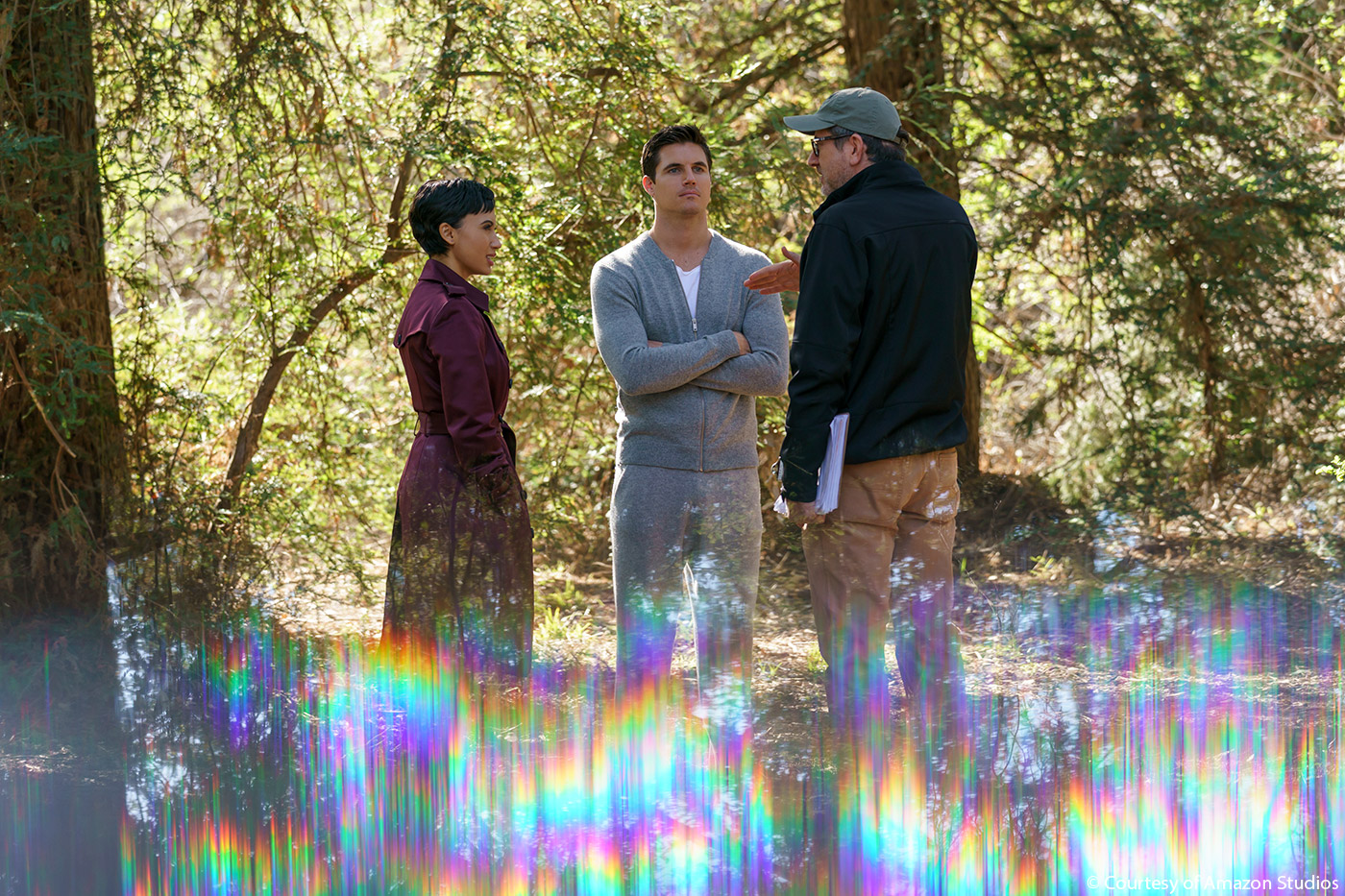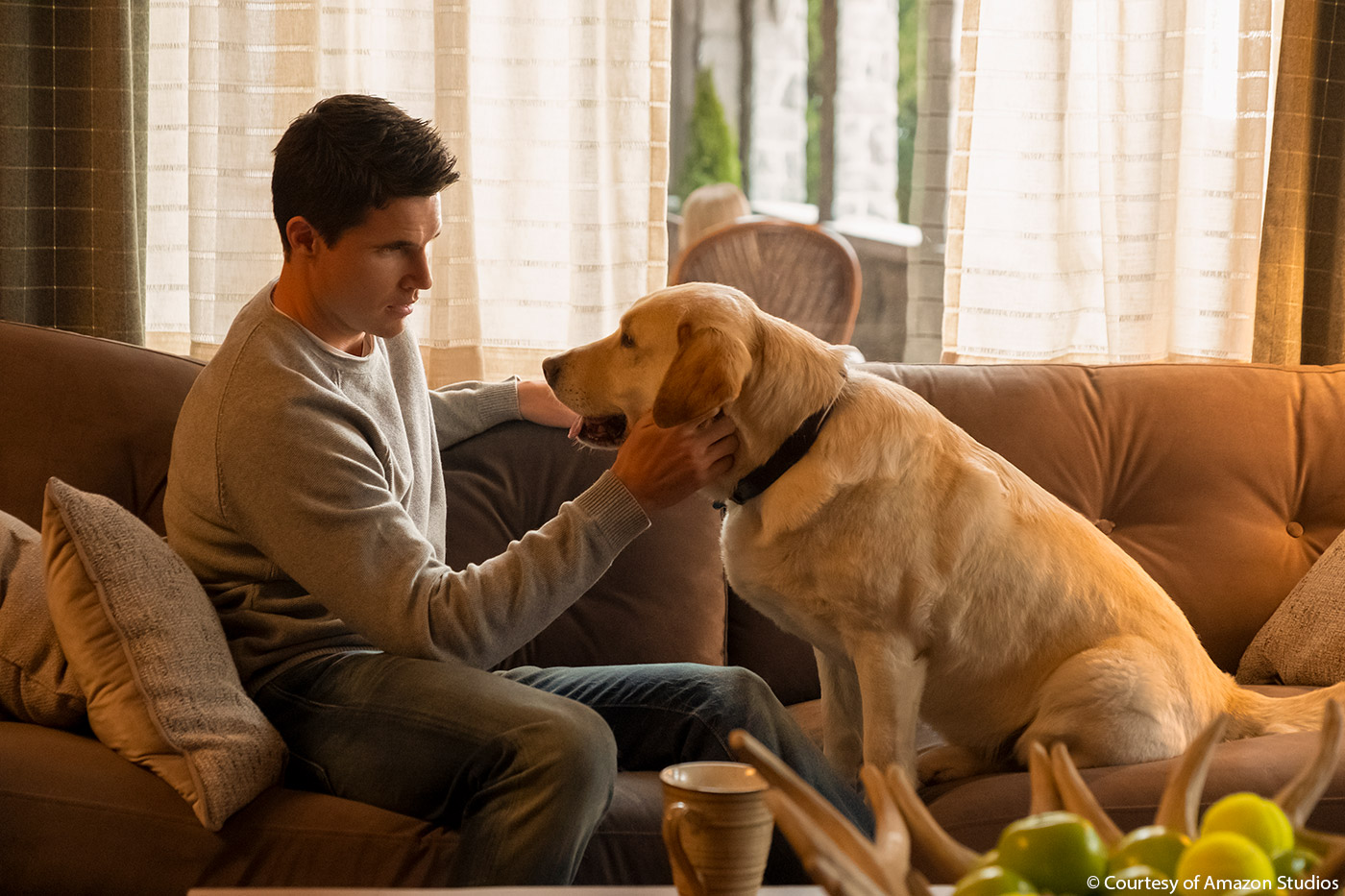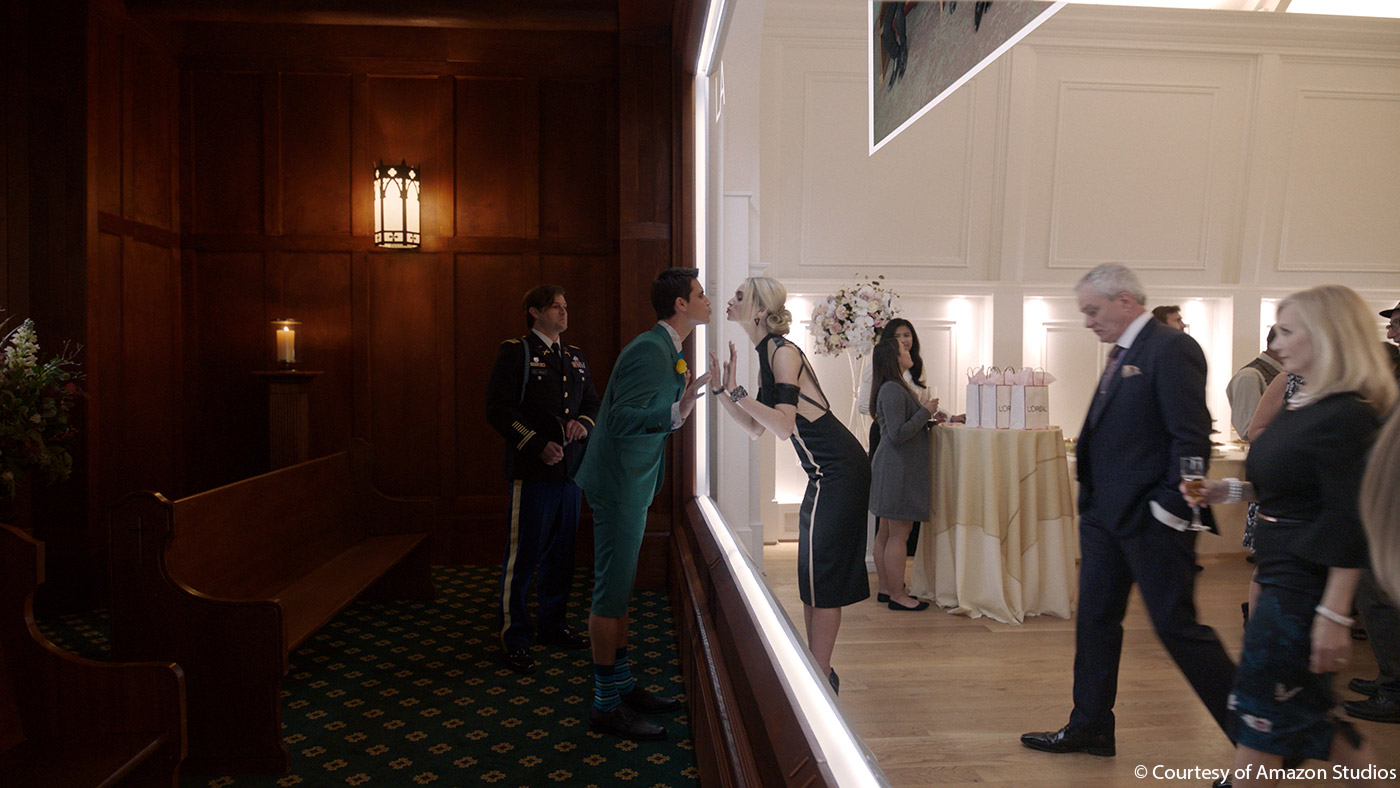In 2015, Marshall Krasser told us about Prime Focus World‘s work on MORTDECAI. He then worked at Psyop, CoSA VFX before joining FuseFX in 2018. He worked on many series such as THE MAN IN THE HIGH CASTLE, LUCIFER and THE 100.
How did you and FuseFX get involved on this show?
In November of 2018, initial calls and bidding started after it was determined this would be a Vancouver based show. In early December 2018, Jon Cowley [FuseFX’s Vancouver Head of Studio & Senior VFX Supervisor] and I had a conversation with Greg Daniels in a meet and greet session where he discussed various aspects of the show and his vision.
Our understanding was that UPLOAD had had a long journey to reach the screen – It started over 30 years ago as a series concept in the mind of Greg Daniels when he was a staff writer for SNL. Since then, VFX technology advanced and allowed more and more of his visions to be realized. Upload is set in the Near Future, and interestingly enough – a lot of the futureware you see might be close to being a reality.
Greg wanted all of the visual effects to be grounded in reality – but at the same time, introduce elements in the « Digital Afterlife World » that hinted of being just that – reality base, digital but just a « little » off. He was very clear with his vision and the role that VFX has to have in a comedy – it’s there to assist in the narrative, not be the narrative.
Having worked on GALAXY QUEST years ago, I reassured him I did understand the role VFX needed to play — be there to support and tell the story when needed, and add any comedic moments when called upon.
How was the collaboration with the showrunner and the directors?
The communication and collaboration was incredible. Early in the process, we would collectively run through the script with the showrunner, producers, episode director, 1st AD and all heads of departments [HOD]. As we went through this process, we would determine the approaches we would take on all aspects of the episode. We would also have separate meetings with SPFX [Special Effects], Stunts, and VFX [Visual Effects] to determine what pieces should be done where. This was a perfectly discussed and executed project and left very few « surprises » during the shoot and on into post.
What were their expectations and approach about the visual effects?
As we touched on earlier – Greg did not want the show to feel like a VFX driven show. Even though VFX were spread through all episodes and were critical to telling the story – unless required, it should not be the center focus.
How did you organize the work with your VFX Producer?
Marc Mason and the production team handled the schedules and deliveries for the show. Generally he talked budget and I talked creative. Our in-house tools showed where we were landing budget-wise, per shot, daily, and Marc was there to keep us on track.
Marc was in constant communication with the Post Producer Mark Doulas and later Katie Strunk, while I was more focused on collaborating with Greg.
How was the work split amongst the FuseFX offices?
All of the work was done in the Vancouver office, except for the talking dog animation and lighting [the compositing was done in Vancouver]. We had a team in LA that had recently created similar work, and it made the most sense for them to assist for efficiency.
How did you work with the art department to create this vision of the Future?
Early concept work had been done by the UPLOAD in-house department – as far as some of the key pieces were concerned. They assisted in some of the screen designs and other specific needs.
For the most part, when it came to the VFX work, it was mocked up by the FuseFX in-house concept team on an as-needed basis. The Torrent and the Update is one of the cases where we relied heavily on our Concept Artists’ vision.
Can you elaborate on the creation of Lakeview and Los Angeles?
The initial look of the world was set in the original pilot (before FuseFX’s work). As Fuse began its work, it was decided that we would recreate all of the VFX for the pilot to provide a consistent look and quality to the VFX work across all episodes.
This actually worked out better for everyone since Greg had wanted to be able to tune and polish the VFX that was in there initially. By using the pilot as a high-level animatic, we could quickly advance the work to the next level.
Source photographic material had been shot on location in NY for Lakeview, and luckily there was enough for us to build upon to get what Greg wanted. And for LA, we sent someone out from our LA office to capture imagery — fortunately, Post-Producer Mark Douglas lived close to the Melrose location we needed to put into one of our Vancouver based plates and he was able to capture what we needed.
The main difference between Lakeview and LA/NYC was in the shooting style – Simon Chapman was our Director of Photography and had worked out a shooting and lighting scenario that helped sell the two « worlds ». The real world was grittier and had more unlocked camera work – whereas the Lakeview world was more static or limited camera operation. It’s subtle, but it really assists in selling the difference.
What kind of references and indications did you receive for the Future?
We were always looking for « future » references. Greg had numerous images he had accumulated over the years and shared those with us from the start. We would also do online searching to see if there was anything out there to inspire us – but generally, it was taking the written words and trying to visualize a way to portray how they might look.
For the Nathan booting up sequence (in the pilot), the inspiration was something that had been floating around in my head for many, many years – just waiting for a need to come out.
If you close your eyes really tight at the end of the day and rub them – one usually sees random movements of lights and shapes darting around – these normally go through color shifts and shape changes as you continue to rub your eyes.
These small lights are called phosphenes, a visual phenomenon caused by mechanical stimuli resulting in pressure or tension on the eye when the eyelids are closed.
The internal lining or retina’s job is to take visual information entering your eye through the pupil and convert this information into electrical signals. These signals are then sent to the brain to provide us with the visual image we see in the world. Phosphenes are generated by the retina when some sort of stimulation hits it, even with the eyes closed.
So for me, this was a perfect way to try and envision the formation and coalescence of consciousness. I was glad that Greg let us explore this and bring it to light.
Can you tell us more about the highway sequences?
For this sequence, we initially looked at using traditional exterior driving plates for the backgrounds. But with the need for total control of our driving path and needing only future cars, we took the route of a complete exterior recreation. The only non-CGI generated element is the far background hills. By having total control of this sequence, it was a perfect way for us to manipulate all aspects of the scene from light direction, smog levels, 3d tree foliage, car reflections and glints, future buildings, and signage. And not to mention the SCHP Drone we added into the mix. A fun, yet challenging sequence due to the amount of detail required to make it photoreal.
How did you create and animate the self-contained cars?
All hand animation and art directed lighting. Rav Brar was our CG Supervisor, and he led the lookdev and build team for the freeway « set. » Then it went to our Animator Adam Chaput who hand-animated them when needed. The others were repositioned as needed by Asim Khan, who was the key lighter on the sequence. Then the final patina was added in the comp – primarily by Ben Funk. It was a significant team effort on this one for sure.
How did you manage the appearance and disappearance of the characters in Lakeview?
That was all 2D VFX work, Dan Rubin was the primary Compositing Supervisor on the show, and he worked out the Look Dev development on their appearance/disappearance which was very successful.
One tricky part was during the on-set shooting – we had to make sure we could get a clean plate with no background crossover issues of people/moving elements that we could not re-create. We would have the « angel » actor step in/out of the scene, if possible, with action sometimes « freezing » to allow a transition point. One of the trickier ones was on the bed when Nora appeared behind Nathan and was messing with him. It took a lot of plate reconstruction to get us out of that one.
The series is full of motion graphics and animations. How did you create and animate those elements?
There was a motion graphic on-set team that developed a lot of the work. Gladys Tong’s team was driving that at G Creative Productions Inc. here in Vancouver. Unfortunately, there were times, where they were not able to get approved designs during the shooting phase to do on-set playback. This meant there was a certain amount of work we had to develop at FuseFX while in post-production – luckily, we have a multi-talented workforce that we could draw upon.
The Gordita crunch was a fun sequence in that we got to design, create, and animate the character. We developed key poses and then passed that to our animator to get the timing. This was then passed on to the compositor to take all of the poses and put it all together.
How did you handle the various glitches that appear sometimes in Lakeview?
We based it on some real-world events – think we have all suffered from slowed internet connections and or digital cable box hiccups [especially in what we are going through right now on a global scale, where everyone is stuck at home and online]. So looking at those « real world’ glitches, we sought to see what we could do to take them to the next visual storytelling level. What you see is the 2d effects that we came up with.
Can you explain in detail about the creation and animation of the psychiatrist dog?
Early in the process, we were sent a few audition images of potential dogs. Working with Greg, we selected the dog that appeared to be most suited for the muzzle replacement and animation we had planned.
Since they hadn’t determined the edit while shooting, we had to film the actor running through all of his lines so we could get this to work. That gave us a perfect reference to guide too – of course, a dog’s anatomy is different from a human, but it got us in the ballpark.
Our LA team had developed an animation rig we were able to build upon and modify to conform to our “actdog”. And then it was just a matter of finding that fine line between cartoon and realism we needed.
The toughest part happened during shooting — and that was keeping the dog [Rowdy] cool enough not to pant or drool.
Which sequence or shot was the most challenging?
Another tough call – we had planned out the work before we shot, so didn’t end up with much in the way of surprises. Some of the « System Update » and « Travel Room » shots were pretty tricky conceptually to realize.
Is there something specific that gives you some really short nights?
Not really, mainly, I had those early on during the on-set shooting days. And that was about trying to make sure we had thought of everything on the more complicated shots and that we had it all planned out. But at the end of the day, on-set sometimes you just have to shoot from the hip as things evolve.
What is your favorite shot or sequence?
That’s like asking a parent which is their favorite child — you should never say 😉
With the scope and varied work we did, it really is hard to put the finger on it. I try to make every sequence my favorite – that way, they all get the same amount of attention and care. I’m extremely proud of the work that the FuseFX team created, and it was my pleasure to help guide them along the way. I can’t wait to see the finished episodes with all of the visuals and sound mixed together – might have a favorite then.
What is your best memory on this show?
So many memories, we had some really fun times just shooting the show. We were prepping the next episodes while we were shooting the current ones – so it was a fast ride.
I had one case during an exterior Green shoot where the actress [Andy Allo] playing Nora, was sitting on an SPFX rig 20 feet up in the air in front of a green screen, and I started to shoot reference photos of her and the rig. As I brought the camera up to start shooting, I realized I had my lens cap on. Well, Andy noticed this since she could see everything from her [literal] bird’s eye view. Suddenly booming over the set, I hear, « Hey Marshall, it helps if you remove the lens cap! » — we all had a good laugh — Andy, the other actors, and the entire on-set crew were an awesome bunch of people to work with.
And I would have to say; the FuseFX team was a hard-working and talented group of people – It was an honor to be able to help them bring Greg’s visions to life.
How long have you worked on this show?
As mentioned earlier, preliminary discussions began in November of 2018, and we delivered the last shots in Late December 2019 – which ended up being a little over a year from start to finish.
What’s the VFX shots count?
FuseFX created almost 1,400 shots spread across all episodes. There were additional shots that did not require Fuse’s level of expertise, and these were handled by a studio post-production team in LA spearheaded by Jeff Olney.
What was the size of your team?
It varied, but generally, we had 75 artists at any one time spread across all disciplines.
What is your next project?
That is a tricky one. We have a lot of projects slated, but all productions are in a holding pattern. We will just have to wait until the dust settles and see where the chips may fall.
A big thanks for your time.
UPLOAD – Trailer
WANT TO KNOW MORE?
FuseFX: Official website of FuseFX.
Amazon Prime: You can now watch UPLOAD on Amazon Prime.
Greg Daniels: My interview with showrunner Greg Daniels about UPLOAD on What’s On Friday.
© Vincent Frei – The Art of VFX – 2020



